I like it when water comes up. Why? It pushes cold blooded river smallmouth bass into predictable places inside more predictable places and they themselves are there for the predictable food. Eddies and inside bends with depth. There is no better example of this than in the cold months. Saturday, I had the end of a slow descending drop from near flood stage meeting a thaw of the recent snow. Water of decent clarity 16-18", green, cold around 40F.


Went back to where I saw the black pool of minnows nearly as big as my house. That day, the flow was medium and clear. One fish only from the spot on float and fly. I had come back a few times to this mammoth pool after discovering it was full of nice bass in the Fall. That day, they wanted a 4" Sammy up top. Several months later I've been back with poor results considering the bass I know are in there! I had decided in my head the pool was so boulder filled it would take a good strong push to get them out of the pool and into the side pocket seen in my pic below. There's a ridge of gravel and boulder deposited by high water creek channel on the right where my kayak sits. Along with the slow inside bend you see in the pic this creates a nice eddy from 2-4' deep.
Now the water was rising, already up 6-8". Planned the ole kayak down, drag/paddle back up. About 2-3 miles down. I had done this before in lower water and it was a challenge then.
Bite was on on the way to the pool, usually close in to the bank in what little slack there was. Got dragged and tangled by a big carp. Ended up flopping around between my legs for a while. I finally realized I should glove the gill cover and toss the fish before it gave me most uncomfortable blowjob. Was probably 10-12#s
Smallies were concentrated by the swift current. High, cold water, warming, can't beat it! I'd pick them up on the bottom and drifting a float, didn't matter. Both techniques would pick up the extras here and there after I had presented the other.
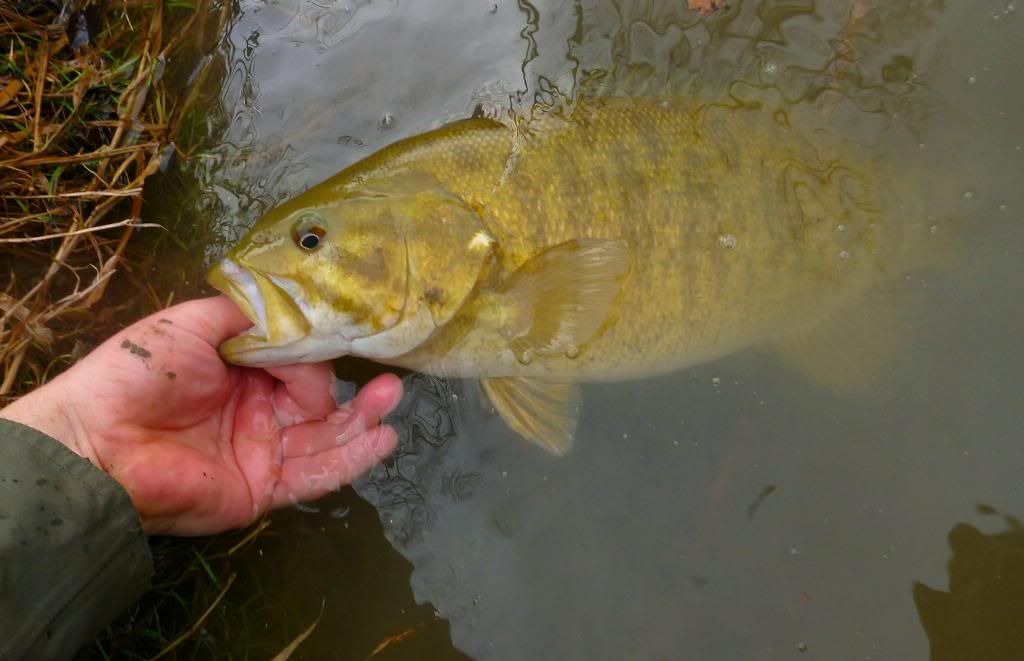
Pulled 12 smallmouth off this bank from 6' above, when I hooked the first one, it shot downstream and I ran along above keeping on pressure. Could see it was huge from up there. Neat. It made a run for the riffle and then turned back from it as if to know it didn't want to live down there. At one point, pulled a 19.5", 16", 18.75" consecutively. At the top of the triangle is where I spotted the huge cloud of minnows in a past trip. Picture is of course out of scale, but you can see my kayak. The other side of the V is three times wider than the eddy. I cracked the case here. When the water comes up and deflects off the rocks above the triangle, some get swept downstream and the smallies wait in the slack. It takes current to push them out of the boulder fields in that giant pool, though. As it got later found some up in the triangle(probably bombarding the pod), including the 19.5"er!
It really was a case where smallies feed more during higher water. Their food is bunched up and they can access them with lesser visibility.
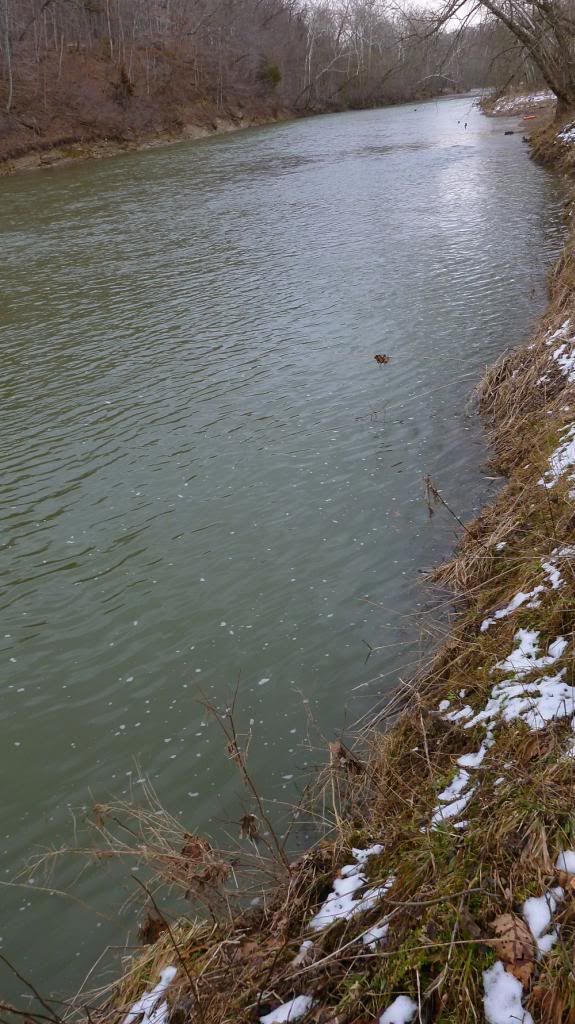
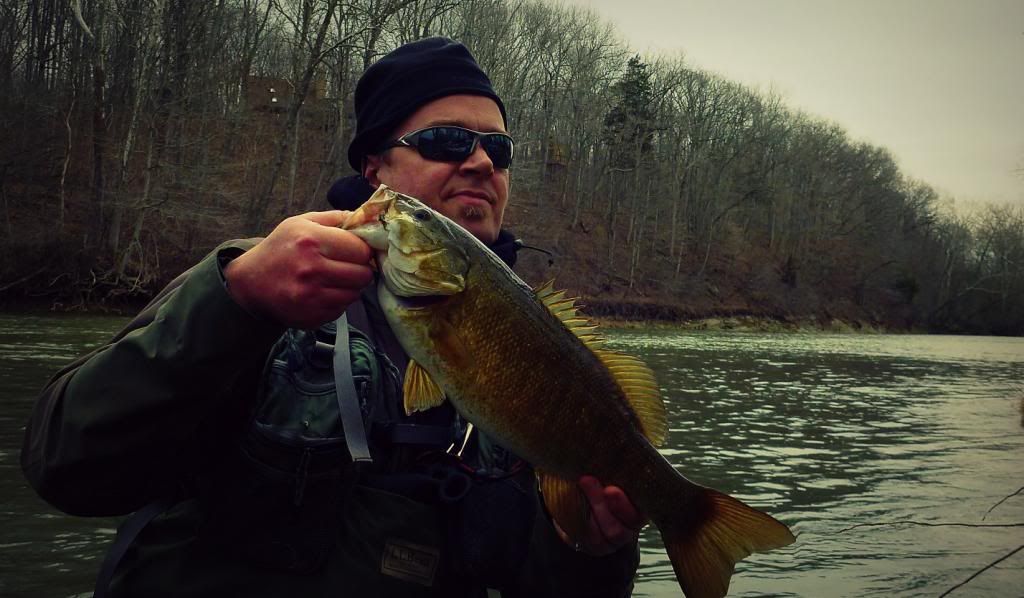

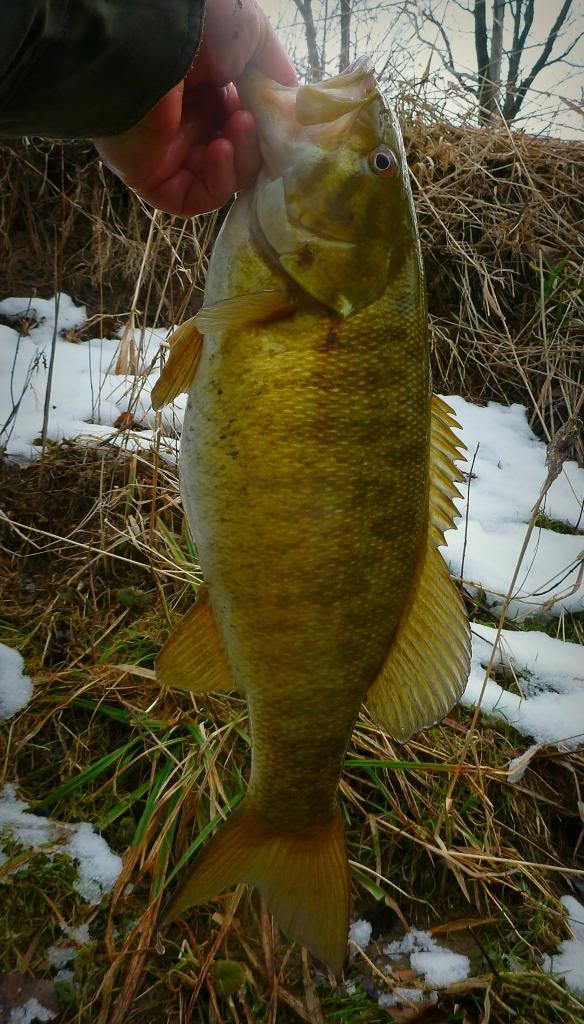
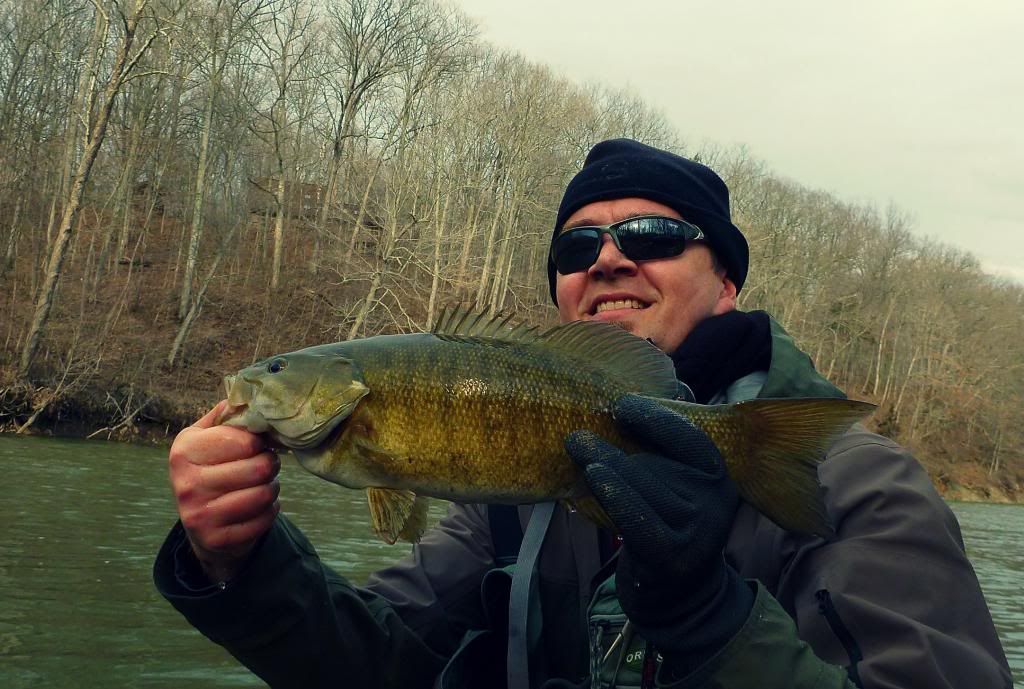
For this type of fishing, I use a 1/16th oz hair jig like those used in float and fly technique (my own ties), an 8' ML BPS Microlite FnF rod:

The jigs are either drifted at various depths along the slowest of current seams inside eddies, or free lined along the bottom. Yes, it's hard to keep a 1/16th oz jog on the bottom, but that's part of the success- you have to work the jig SLOW. Much slower than a tube, but not as slow as some would have you believe. The direction of the retrieve can also make a huge difference.
The small size of the lure makes it deadly. Rarely a miss. Light wire hooks have no problem penetrating with a slight twitch of the wrist. I think I missed 2 strikes today. Lost a couple during the fight, but you just can't beat a 90% hook up rate. Ever.
Flow had almost doubled and I got an insane workout, barely making any headway upstream and ploughing the yak across muddy farm fields. It really was too far. Rough return at half the flow.
Ended up breaking both my rods dragging the yak through the woods, popped the button off my pants, but it was so worth it. Lost a couple nice ones early in the day or it could have been really sick.
24 Bass 22 SMB (20.25", 19.5", 18.75", 2-16", 2-15") 2LMB, 30" Carp
Bite was on on the way to the pool, usually close in to the bank in what little slack there was. Got dragged and tangled by a big carp. Ended up flopping around between my legs for a while. I finally realized I should glove the gill cover and toss the fish before it gave me most uncomfortable blowjob. Was probably 10-12#s
Smallies were concentrated by the swift current. High, cold water, warming, can't beat it! I'd pick them up on the bottom and drifting a float, didn't matter. Both techniques would pick up the extras here and there after I had presented the other.

Pulled 12 smallmouth off this bank from 6' above, when I hooked the first one, it shot downstream and I ran along above keeping on pressure. Could see it was huge from up there. Neat. It made a run for the riffle and then turned back from it as if to know it didn't want to live down there. At one point, pulled a 19.5", 16", 18.75" consecutively. At the top of the triangle is where I spotted the huge cloud of minnows in a past trip. Picture is of course out of scale, but you can see my kayak. The other side of the V is three times wider than the eddy. I cracked the case here. When the water comes up and deflects off the rocks above the triangle, some get swept downstream and the smallies wait in the slack. It takes current to push them out of the boulder fields in that giant pool, though. As it got later found some up in the triangle(probably bombarding the pod), including the 19.5"er!
It really was a case where smallies feed more during higher water. Their food is bunched up and they can access them with lesser visibility.





For this type of fishing, I use a 1/16th oz hair jig like those used in float and fly technique (my own ties), an 8' ML BPS Microlite FnF rod:

The jigs are either drifted at various depths along the slowest of current seams inside eddies, or free lined along the bottom. Yes, it's hard to keep a 1/16th oz jog on the bottom, but that's part of the success- you have to work the jig SLOW. Much slower than a tube, but not as slow as some would have you believe. The direction of the retrieve can also make a huge difference.
The small size of the lure makes it deadly. Rarely a miss. Light wire hooks have no problem penetrating with a slight twitch of the wrist. I think I missed 2 strikes today. Lost a couple during the fight, but you just can't beat a 90% hook up rate. Ever.
Flow had almost doubled and I got an insane workout, barely making any headway upstream and ploughing the yak across muddy farm fields. It really was too far. Rough return at half the flow.
Ended up breaking both my rods dragging the yak through the woods, popped the button off my pants, but it was so worth it. Lost a couple nice ones early in the day or it could have been really sick.
24 Bass 22 SMB (20.25", 19.5", 18.75", 2-16", 2-15") 2LMB, 30" Carp
No comments:
Post a Comment